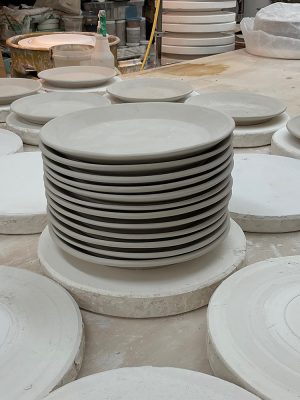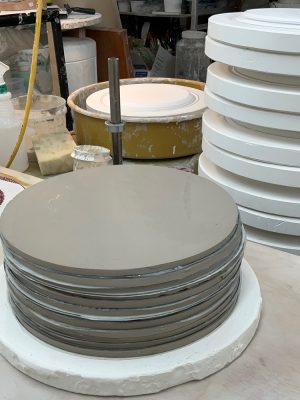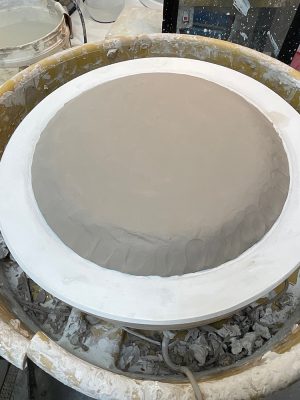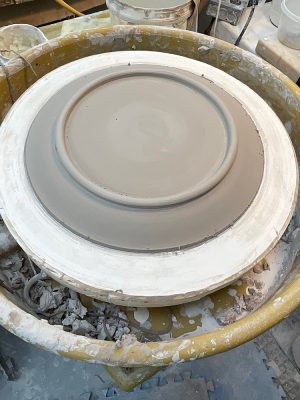The dozen smallest plate bats have been used twice now. Learning the do’s and don’ts in the details of the process.
Moving the clay against the plaster form feels different than moving it between your fingers. The plaster is absorbing water from the clay, making it progressively stiffer and less responsive as you thin the walls and raise the foot. Requires that you to work with speed and consistency. Struggled with this the first day but speed and surety of movements improving now.
The second batch took a whole lot longer to release than the first. The bats had absorbed too much moisture from back-to-back use to work efficiently. Better to rotate the sizes one day to the next to give the plaster time to dry out between.
Throwing the first twelve luncheon plates today, the middle of the three sizes.
I begin with a round clay slab, a bit thicker than I want the finished plate to be. I spritz the surface that will face the plaster with water so that it stays firmly in place as I pat it down onto the plaster form. Then throw the backside of the plate on the wheel. Having a pin cut edge is essential to the clean release of the clay as it shrinks on the plaster bat.





